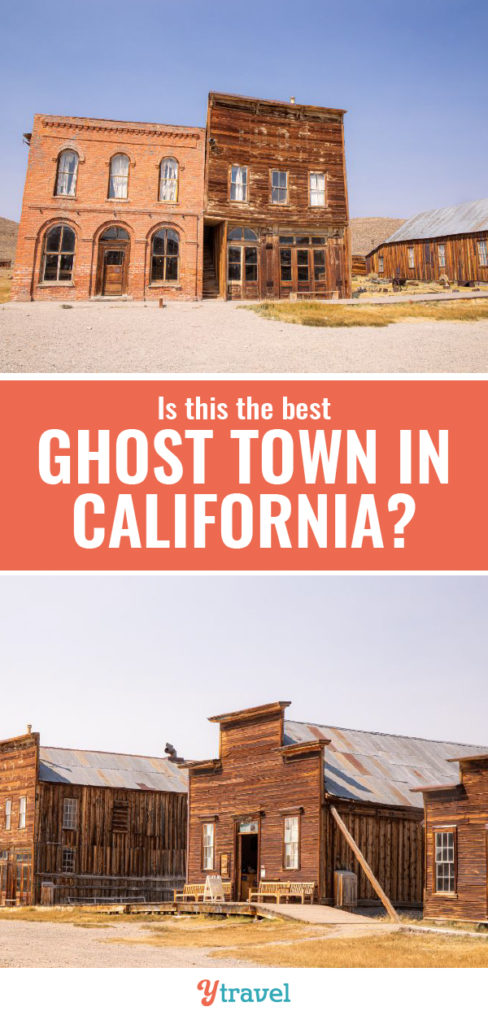[ad_1]
Sponsored by Globus Journeys
I love time travel experiences – the opportunity to immerse yourself into past eras and a imagine how life once was.
It puts into perspective for me the life I now have – why I can be grateful for it, how I can give thanks to those who came before me to make so much possible, and to reflect on what the values and priorities of the past may have been, and how they’ve now changed.
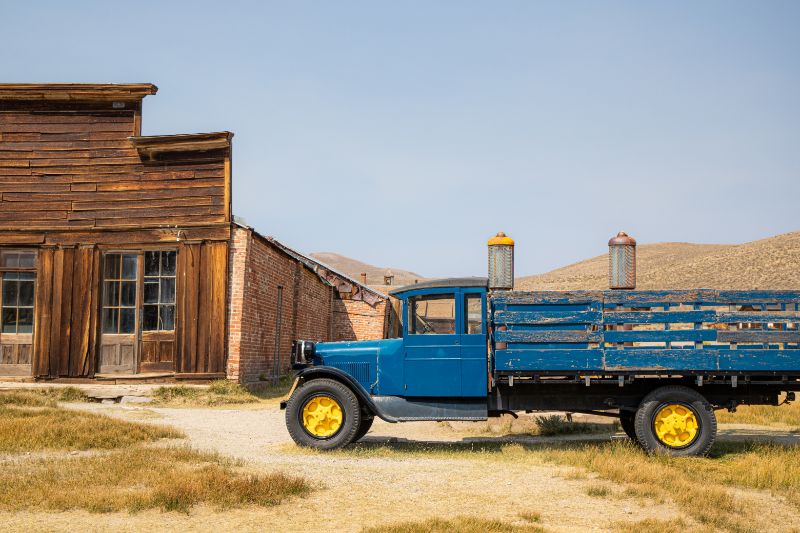
It’s the deepening of my curiosity and consciousness over how we are all evolving.
My tour of Bodie, California a once thriving isolated gold-mining town 8,275 ft. high in the Sierra Nevada Mountains of Northeastern California allowed me to do just that.
The Bodie State Historic Park is one of the best “life frozen in time” gold rush, ghost town experiences I’ve had and the kind I seek when traveling.
The History of the Ghost Town of Bodie California
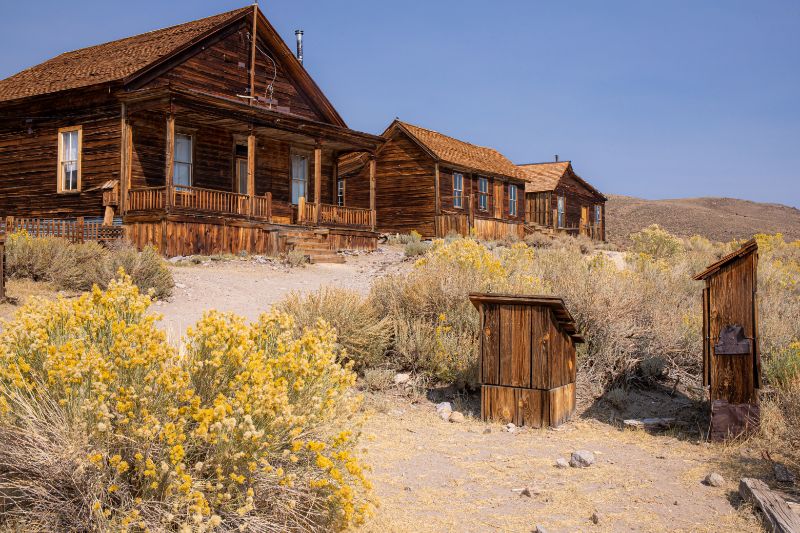
The town of Bodie is named after William (a.k.a. Waterman) S. Bodey, who in 1859, while prospecting with three prospectors in this gold-laden valley, discovered gold in a stream bed near what is now called Bodie Bluff. (a sign painter mistakenly changed the spelling to Bodie later!)
Sadly, Bodie never even saw his fortune realized or the beginnings of this town as he perished in a fierce blizzard not long after discovering the gold.
A mill was established in 1861 and the town began to grow. It’s beginnings were faltering until in 1875, Bodie’s luck changed when one of the mines caved in revealing a huge body of gold.
Word made it to San Francisco and Bodie went Boom!
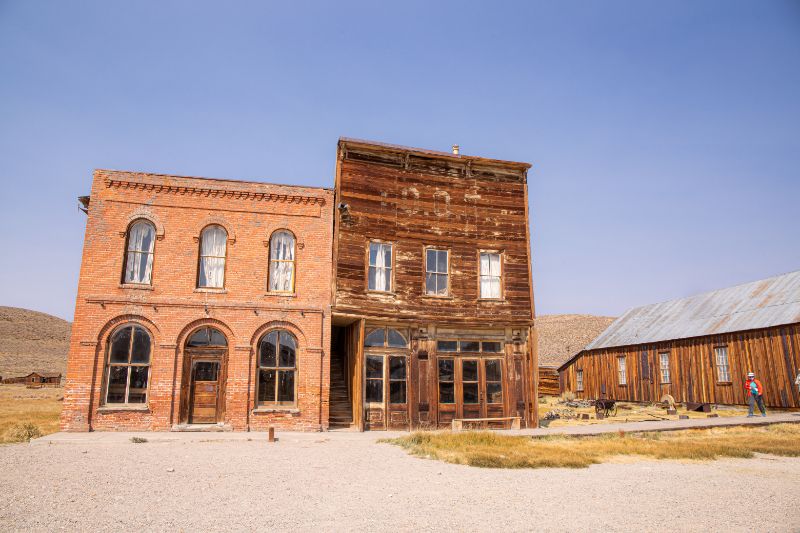
By its peak in 1879, Bodie had a population of 7,000–10,000, one of the biggest towns in this area at the time, and it produced more than $35 million in gold and silver.
As with most gold mining towns the wealth didn’t last long.
By 1881, the mines began to deplete, and soon the population dwindled to about 1500 people. A kitchen fire in the summer of 1892 destroyed much of town to the west of main street.
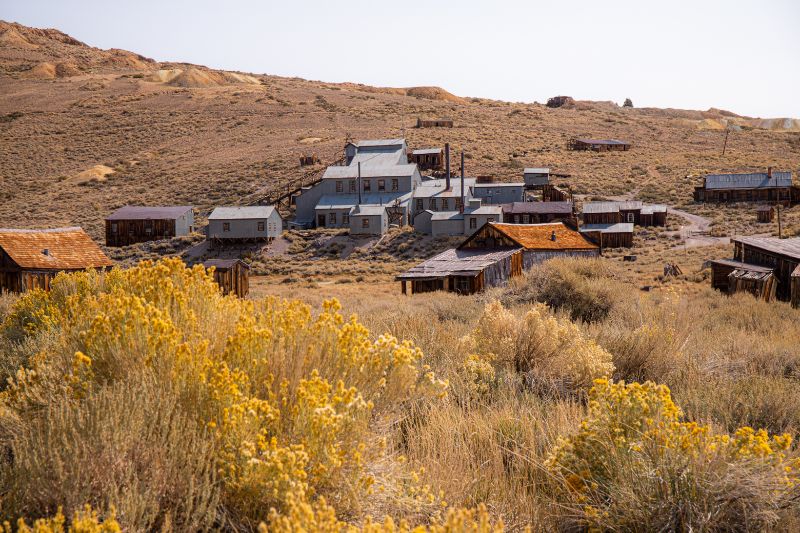
By the 1890 hydraulic machinery bought a little more growth to Bodie, but by 1932 another fire wiped out most of the town (started by a cheeky three-year-old. See below). The last person left in the 1940s.
In 1962, California State Parks moved into protect Bodie by designating it a National Historic Site and State Historic Park . It is preserved in a “State of Arrested Decay”, meaning Bodie is exactly as it looks when abandoned in 1942, right down to goods still on the grocery shelf and the weights lying around on the gym floor.
The state park does not restore or recreate the buildings, instead preserving them in their aged and weathered 1880s appearance.
There are over one hundred abandoned wooden buildings lining the dusty, streets of the Bodie ghost town for visitors to explore either on their own on a Bodie guided tour.
Taking prominence on the hill and overlooking the town is the Bodie Stamp Mill, which was closed off to gawkers, but I believe you can join a tour to visit here specifically.
The Spirit of Bodie Ghost Town on a Guided Tour
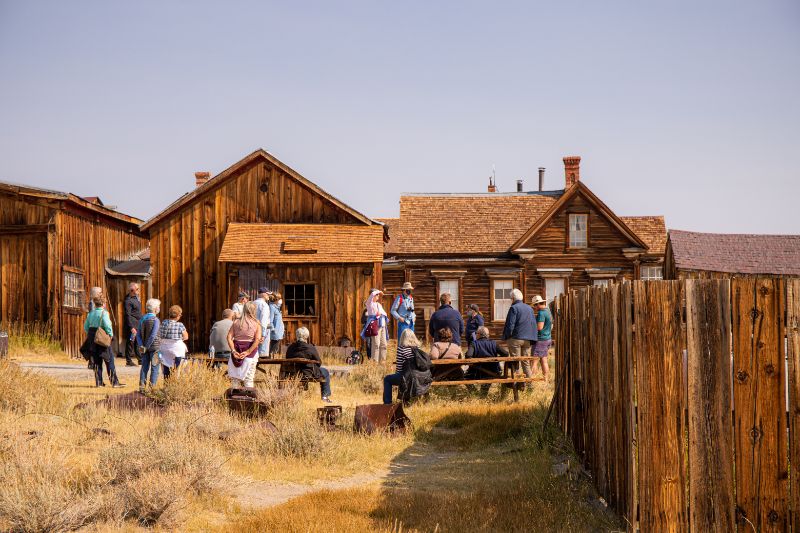
There are various public and private tours available of the Bodie Ghost Town. See here for options.
I highly recommend it as it your knowledgeable guide will bring the town of Bodie to life for you. Our guide actually lives in the town of Bodie California for most of the year along with a handful of other workers.
Our visit to Bodie was part of our Choice Touring Northern California Dreaming tour. This tour style offers a selection of experiences in a particular destination, allowing you to move from the standard -all-visit the same thing, to being able to choose an experience more suited to what you like.
My selected kayak tour of nearby Mono Lake was cancelled due to a sudden death in the tour operator’s family (we still got to visit this mystical lake. Post coming tomorrow) I was thrilled that I had the opportunity to visit Bodie as I LOVED it and was a highlight of the trip.
I joined the Globus Tour on a paid partnership project with iambassador and Globus Journeys. You can read more of this trip where I share why I loved the Globus group tour, and the main highlights from our Northern California trip.
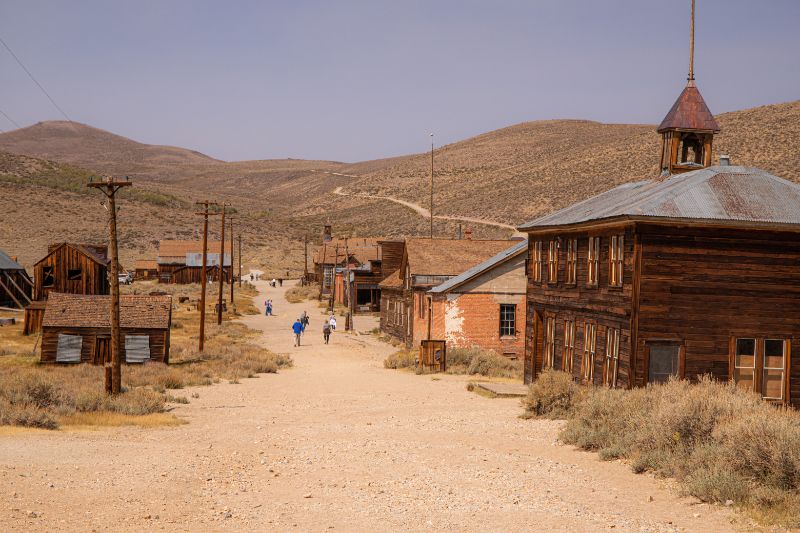
Our guide shared the history of Bodie and more about the spirit of the town as she walked us around the streets including the mile long main street which divided the town between the good and bad side.
In Bodie you were either rubbing shoulders with industrious miners and successful businesspeople or nefarious gunfighters and gamblers.
It had a reputation for lawlessness, stage holdups, street fights, and gun fights and became known as a shooters town. Tombstone had nothing on the Wild West-style gunfights often erupting throughout the town, no doubt after a shot or two at any one of the rumored sixty-five saloons.
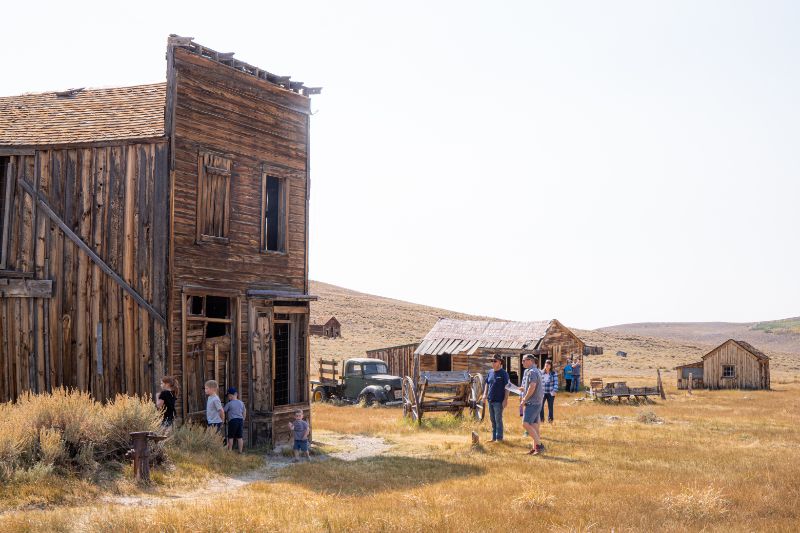
The “bad side” was riddled with opium dens and a red light district where many women were forced into prostitution to cover their costs when their husbands died in the mines.
Bodie even had its own Chinatown, pushed over the ridge and (out of sights of the whites). It created by the Chinese residents who wanted to maintain their own customs and traditions. They had their own general stories, boarding houses, gambling halls and even a Taoist Temple.
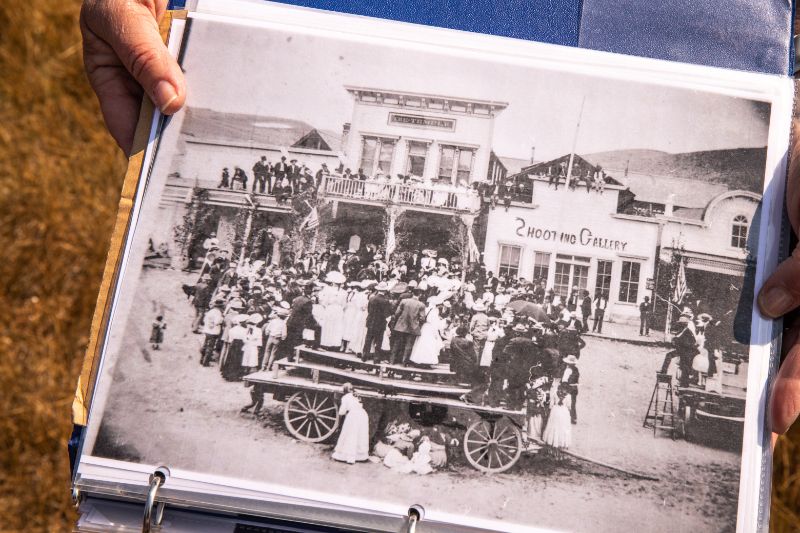
Our guide shared black and white photos of Bodie in its hey day including life outside the constant 24-hour noise of the mines operating, such the old baseball field and racetrack, where the townsfolk gathered to play and celebrate.
We walked around the remains of their homes, some fancier than others, and all with gardens where nothing grew, except a lonely rhubarb plant and the ubiquitous yellow wildflowers overtaking the dirt. All food and supplies had to be shipped into Bodie, further highlighting the challenges of life in this California high mountain town.
The availability of lumber, which was necessary for building construction, mine support, and fuel, was a major issue as there were so few trees and it was hauled in and out by mules until the a railroad was built in 1881 called the Bodie Railway & Lumber Company, bringing lumber, cordwood, and timbers to the top of the mining district from Mono Mills south of Mono Lake.
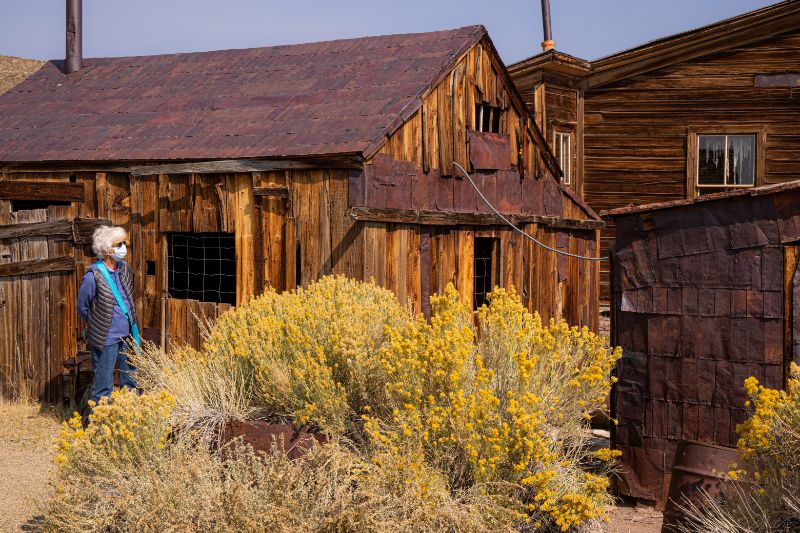
We peeked into the windows of the Methodist church, schoolhouse, jail barbershop, saloon, and other buildings where bottles, stocked shelves, desks, and trash was left strewn on the floor.
It’s as if everyone just walked out and left it as it was.
Wait a minute they did!
It was too expensive for the residents to take their possessions with them. They were charged high toll fees by the weight on the roads out. It was cheaper for them to leave it and then begin anew in their new homes.
Peeking into the buildings was my favorite part to the tour as it gave a great insight into life back then and how quite similar it was to us now.
The village gym had punching bags and weights lying around, the bar had a pool table, the schoolhouse had drawings on the chalkboards, a globe, and maps lying around and whale pictures on the walls depicting alphabet sounds, and the general store even had dusty condoms still on the shelf.
What surprised, more shocked, me was how similar the school room of the Bodie past is to our school rooms today. Not a lot has changed, and with education I feel it should be ever evolving! I mean look at those desks – are they too different to the uncomfortable things we still make our kids sit in?
The tour will share the story and history of Bodie and its gold mines, but also that of the characters who lived here creating the “Bad Man from Bodie” reputation.
My favorites were the gun fighter who had his arm shot off and became a defense lawyer to make something go his life, and the cheeky three year old, who upset with being reprimanded at a party, snuck away, and threw a match on the ground, returning to show the townsfolk what he had done – well they Kinda saw the flames that destroyed much of the town!!
After that fire, the town slowly began to demise and soon after the last remaining residents left.
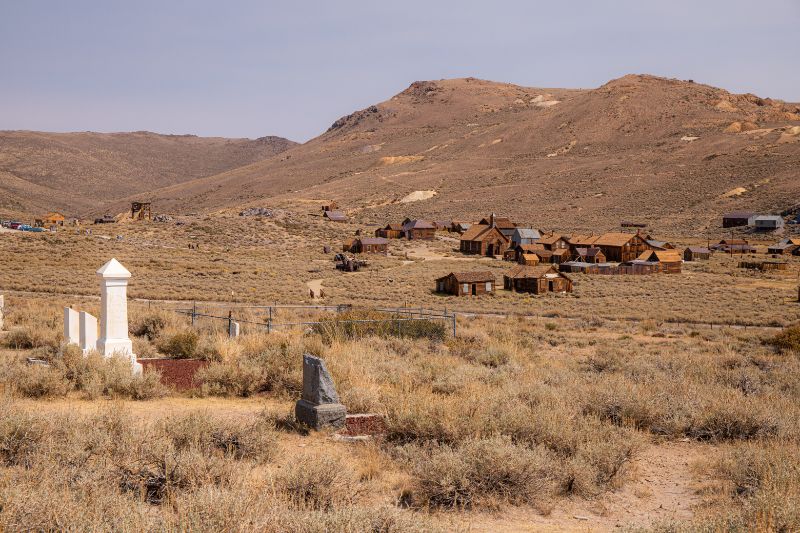
Except for those in the cemetery. They are still standing guard over the town and running muck at night keeping Bodies reputation as THE Wild West town of California.
The cemetery is located at the end of a short footpath on the outskirts of town behind an ornate fence. It’s worth walking out here for the view back over the town and surrounding hills alone.
Buried in this cemetery are the respectable residents of the town, most noted by the fancy headstones.
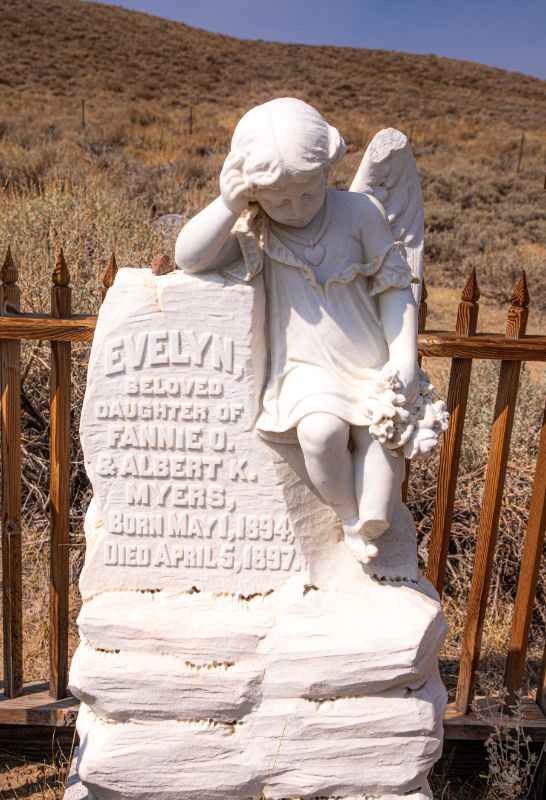
I’ve only since learned that outside the ornate fence is the unmarked Boot Hill cemetery, reserved for the nefarious Bodie characters. I wish I got to see and experience that presence! Do tell your stories.
Bodie California Ghost Town Reflections
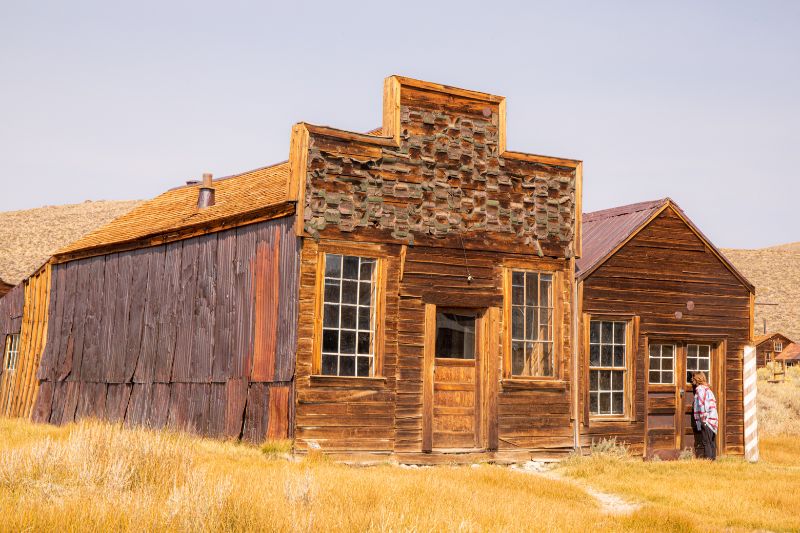
This visit to Bodie had me thinking about how would they preserve our towns would in one hundred years’ time? Would people be roaming the streets and gawking through windows?
It feels like we live such transient disconnected lifestyles now that many people don’t become ingrained in a community enough for our stories to be recalled and shared.
This blog is the place I keep my stories and memories to share because I’m a traveler always moving to the next place that holds the gold for me and definitely leaving my possessions behind as they’re too cumbersome and expensive to drag along.
Or will be the bad generation that left all towns empty?
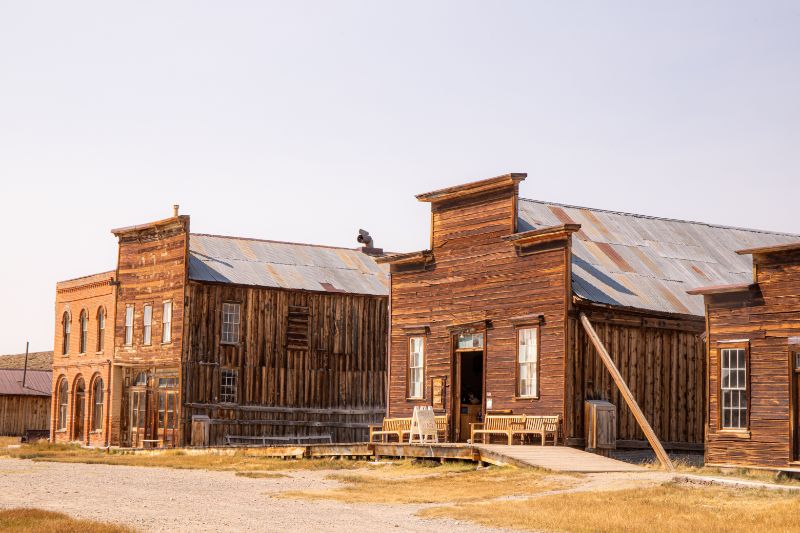
I guess now I’m writing a different story to be remembered and shared. One with roots in a Raleigh neighborhood where neighbors visit with homemade cookies and tomatoes grown from their gardens.
Where our girls have friends knocking on the door to go out ride bikes on the street together, and we have a firepit as a gathering space. And I hope we’re using this part of our story to serve our community in a good way.
And I’m glad, I, and my girls now live in a society where they can create their own income, and not have forced into prostitution if their husband dies. Perspective on how now our life has changed thanks to the thousands who have gone before us to pave an easier path.
So, I guess there may be stories told after all. I just hope no one throws any matches down in a good old 3-year-old dummy spit and destroys my pot of gold. (That’ pacifier for Americans)
Visit Bodie State Historic Park, California
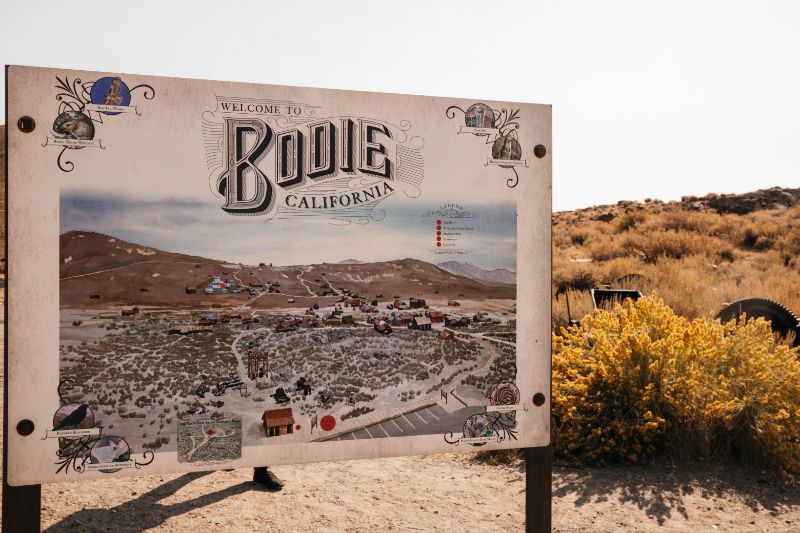
Entrance Fee: $8 for adults, $5 for children under sixteen
Bodie State Park is open all year. However, because of the high elevation (8375 feet), it is accessible only by skis, snowshoes or snowmobiles during winter months. Snowmobiles must stay on designated roads in the Bodie Hills.
There are no commercial facilities like fuel at Bodie, because that is so 1990s. So, fill the tank and your bags with plenty of snacks and food. I’d allow for at least two hours to explore properly. There are a few small hills to walk up but worth it for the view!
There are restrooms by the parking lot and a small museum and bookstore in one of the old buildings.
Bodie State Park Location:
It’s located in the Eastern Sierra close to Bridgeport, June Lake, Lee Vining, Mono Lake and Yosemite National Park. It is located in a remote area accessed by State Route 270, seven miles south-east of Bridgeport. The last three miles into Bodie is along a rough, gravel road. The views, while sparse, are beautiful.
We were staying in Mammoth Lakes, in the heart of Mono County, which is forty-eight miles south of Bodie.
Comments: Do you like visiting ghost towns? Have you been to a cool one like Bodie before?
Pin to save or share
[ad_2]
Source link

